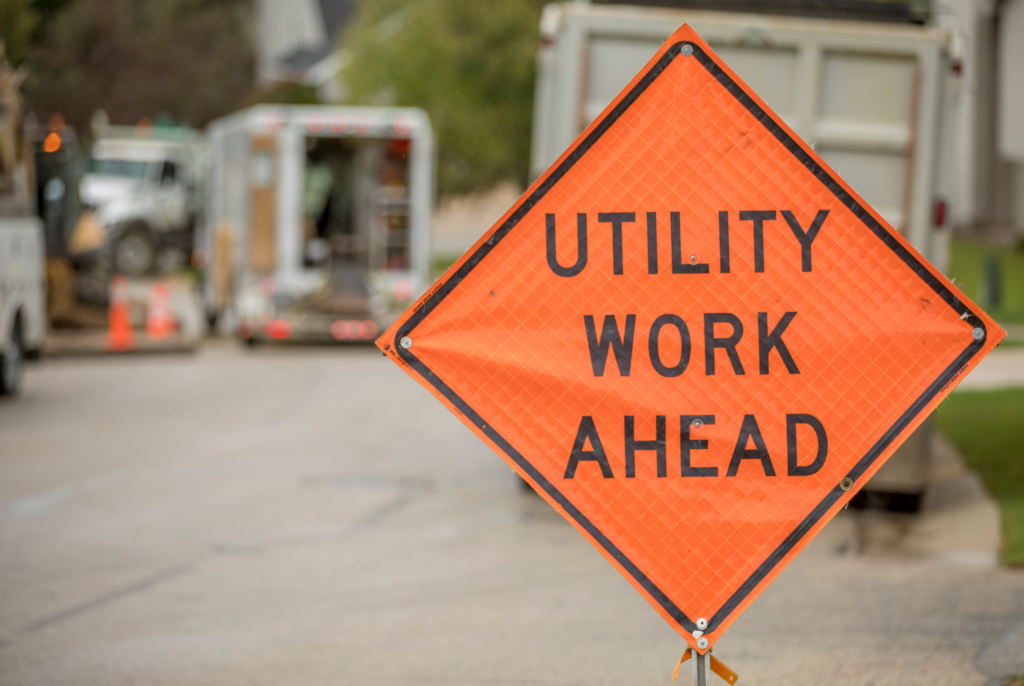Ordinance: Mandatory Replacement of Lead Service Lines
{This ordinance is derived from a Newark City Ordinance}
WHEREAS, the City of {city name} operates the {utility name} water system and the {utility name} water system, the City’s water distribution system, to service its residents and other neighboring municipalities; and
WHEREAS, the {utility name} water system and the {utility name} water system are, and continue to be, clean sources of water; and
WHEREAS, there exists approximately {# of properties} privately owned properties serviced by obsolete lead service lines within the City of Newark, {# of service lines} within the {utility name} water system; and
WHEREAS, the lead service lines connect to the City’s water distribution system, but are owned by the property owner; and
WHEREAS, in {year} the City of {city name} prohibited the use of lead service lines and plumbing in new construction; in 1986 Federal law banned the use of lead solder on pipes in the construction of new homes; and
WHEREAS, the United States Environmental Protection Agency (the “USEPA”) adopted regulations to control lead and copper in drinking water and the {state agency} directed the City to replace lead service lines in accordance with the USEPA’s lead and copper rule; and
WHEREAS, the City believed and believes that the provision of clean, lead free drinking water to its residents is a public purpose beneficial to the City as a whole and any benefit to any private land owner in accomplishing this purpose is incidental and subordinate to this primary public and governmental purpose; and
WHEREAS, in {date}, the City of {city name} created a comprehensive plan to protect families that may be exposed to lead in the water due to obsolete lead service lines on their property; and
WHEREAS, as part of its comprehensive plan to protect residents from exposure to lead, the City of {city name} introduced a corrosion control system expected to reduce the lead levels in the water by reducing the corrosion of the lead service lines on private property; and
WHEREAS, in a good faith effort to continue to protect its residents from exposure to potential lead in the water, the City of {city name} distributed {# of water filters} water filters and over {# of cartridges} replacement cartridges free of charge, provided free blood testing for children under 6 years old and provided free water testing; and
WHEREAS, in addition, the City of {city name} created a {cost of program} program to replace outdated and obsolete lead service lines on private property (“Lead Service Line Replacement Program”), and to protect its residents from the potential dangers of lead in the water where residents could contribute up to {maximum cost of contribution} towards the cost of replacing their lead service lines; and
WHEREAS, it has come to the City’s attention that property owners with lead service lines are not signing up for the Lead Service Line Replacement Program as fast as is necessary to immediately and effectively address the lead service line issue, and the safety of its residents; and
WHEREAS, residents have discontinued using water on properties with lead service lines – this may render the corrosion control system ineffective because of the significantly decreased water flow through the pipes; and
WHEREAS, the Mayor and the {other responsible officials} declare that an emergency exists due to the non-use of water coupled with the slow response of affected property owners to sign up for the current Lead Service Line Replacement Program which results in slower reduction of the lead levels in the drinking water; and
WHEREAS, the City of {city name}, in response to this emergency has created a {cost of program} Lead Service Line Replacement Program which will be free of charge to property owners with existing lead service lines on their private property; and
WHEREAS, {ordinance code} authorizes a municipality to make, amend, repeal and enforce such other ordinances, regulations, rules and by-laws not contrary to the laws of this State or of the United States, as it may deem necessary and proper for the good government, order and protection of persons and property, and for the preservation of the public health, safety and welfare of the municipality and its inhabitants; and
WHEREAS, {ordinance code} authorizes the Governing Body of any municipality to make, amend, repeal and enforce ordinances to regulate buildings and structures and their use and occupation to prevent and abate conditions therein harmful to the health and safety of the occupants of said buildings and structures and the general public in the municipality; and
WHEREAS, for the health, safety and welfare of its residents and the Municipal Council desires to require all property owners serviced by a lead service line, to replace that service line through the program established by the City at no cost to the property owner or replace the line at their own expense and due to the hazard that lead in the drinking water poses to the health and safety of residents, that permission from the owner of the property to replace the lead service line is not required.
NOW, THEREFORE, BE IT ORDAINED BY THE MUNICIPAL COUNCIL OF THE CITY OF {city name}, THAT: Note: Additions are shown in bold and underlined. SECTION 1. {title of ordinance} entitled {ordinance name} Ordinances of the City of {city name}, {state}, as amended and supplemented, by adding a new {chapter name}, entitled Mandatory Replacement of Lead Service Line as follows:
16:23-1. Definitions.
For the purposes of this Chapter: City shall mean the City of {city name}. Contractor shall mean a licensed vendor that contracts with the City of {city name} to replace lead service lines.
Dwelling shall mean a building or structure or part thereof containing one (1) or more dwelling units. This chapter shall also apply to buildings and structures that are not used for residential purposes. Dwelling unit shall mean any room or groups of rooms or any part thereof located within a building and forming a single habitable unit with facilities which are used or designed to be used for living, sleeping, cooking, eating or bathing.
Department shall mean the Department of Water and Sewer Utilities of the City of {city name}, {state}. Lead safe shall mean any condition that does not allow access or exposure to lead, in any form, to the extent that adverse human health effects are possible.
Lead Service Line shall mean the water line on private property that leads to the structure or building that is connected to the main City of {city name} water line.
Occupant shall mean a person or persons in actual possession of and living in the building or dwelling unit.
Owner shall mean any person who has legal title to any dwelling, with or without accompanying actual possession thereof; or, who has equitable title and is either in actual possession or collects rents therefrom; or, who is executor, executrix, trustee, guardian, or receiver of the estate of the owner, or as mortgagee or as vendee in possession either by virtue of a Court order or by agreement or voluntary surrender of the premises by the person holding the legal title, or as collector of rents has charge, care or control of any dwelling or rooming house.
16:23-2. It is hereby established that the existence of lead service lines is prohibited in the City of {city name}.
16:23-3 A property owner may be excluded from the Mandatory Replacement of its lead service line by providing the Department of Water and Sewer Utilities, within ninety (90) days of the Effective Date of this Ordinance, with written proof from a licensed and certified plumber that it does not have a lead service line on its property and/or that the lead service line was previously removed and replaced. 16:23-4. Mandatory Replacement of Lead Service Line
- The owner of any dwelling, building or structure serviced by a lead service line is required to replace the lead service line on their property. The replacement of the lead service line must be completed within ninety (90) days of the Effective Date of this Ordinance. An extension of time may be granted where the owner can demonstrate, to the Department of Water and Sewer Utilities designee, that a good faith effort has been made to comply with the ordinance.
- The owner of the any dwelling, building or structure shall replace their lead service line by any of the following methods:
a. Signing up for the Lead Service Line Replacement Program offered by the City of {city name} and allowing contractors to access on their property to conduct the replacement. The Contractor will provide the owner with a Right of Entry form for completion. The Right of Entry form will provide the Contractor with access to the property to verify the existence of a lead service line; or
b. Replacing the lead service line on their own and at their own expense. If an owner selects this option, then replacement must be completed within ninety (90) days of effective date of this Ordinance. An extension of time may be granted where the owner can demonstrate, to the Department of Water and Sewer Utilities designee, that a good faith effort has been made to comply with the ordinance. An owner is required to provide the Department of Water and Sewer Utilities with proof that the lead service line has been replaced. Proof must include at a minimum: a permit issued by the Department of Water and Sewer Utilities, to a licensed plumber authorized to do the work; an invoice from the contractor who completed the work; a copy of the estimate along with any report of the work completed, and an inspection report verifying the removal.
16:23-5. Authorization to Access Property
- Notwithstanding Section 16:23-4, if an owner of the dwelling, building or structure does not sign up for the Lead Service Line Replacement Program or does not replace its lead service line within ninety (90) days of the Effective Date of this Ordinance (or within the time frame provided in an extension) or is inaccessible or otherwise denies access to the property to enable the replacement of the line, then the following procedure shall be followed:
a. The City shall secure entrance to the property from the owner or current occupant of the dwelling, building or structure, and the City shall incur no liability from the owner. The contractor will provide the owner with a Right of Entry form for completion. The Right of Entry form will provide the Contractor with access to the property to verify the existence of a lead service line. The City shall restore the property to its original condition, or as close as possible to its original condition; and
b. If access is granted by the occupant of the dwelling, building, or structure, then the occupant shall be held harmless and no liability shall incur to the City or occupant due to the replacement of the lead service line by the City of {city name}; and
c. If access is denied by the current occupant or owner, then the City shall commence procedures, including filing a Court action, to conduct the replacement of the lead service line.
16:23-6. Proof of Lead Service Line Replacement Required for Certificate of Occupancy, Certificate of Code Compliance, and Smoke & Carbon Monoxide Detector Certificates.
- Upon the sale or transfer of ownership of any dwelling, building or structure, the owner must provide proof that the lead service line has been replaced in order to secure a Certificate of Occupancy, Certificate of Code Compliance, and Smoke & Carbon Monoxide Detector Certificates.
- Upon the sale of any City-owned property, within ninety (90) days of the closing, the buyer is responsible for replacing the lead service line, by either enrolling in the Lead Service Line Replacement Program or in accordance with
16:23-4 2(b) above.
16:23-7. Penalty.
{If any, to be determined by the municipality}
SECTION 2: If any provision of this Ordinance or application thereof to any person(s) or circumstance is judged invalid by a court of competent jurisdiction, the invalidity shall not affect other provisions or applications of the Ordinance that can be given effect without the invalidated provision or application, and to this end the provisions of this Ordinance are declared severable.
SECTION 3: This Ordinance shall take effect upon final passage and publication in accordance with the laws of the State of {state name}.
STATEMENT
This Ordinance amends and supplements Title XVI, entitled “Health, Sanitation and Air Pollution”, of the Revised General Ordinances of the City of {city name}, {state name},, as amended and supplemented, by adding a new {chapter name name}, entitled “Mandatory Replacement of Lead Service Line.”
PUBLIC NOTICE IS HEREBY given that the foregoing ordinance was introduced and passed on first reading at a regular meeting of the Municipal Council of the City of {city name}, {state name}, held on the {date of municipal council meetings} and that said ordinance will be taken up for further consideration for final passage at the regular meeting of the Municipal Council to be held in the Council Chamber, {location and date of municipal council meetings}, or as soon thereafter as said matter can be reached, at which time and place all persons who are interested therein will be given an opportunity to be heard concerning the same.


